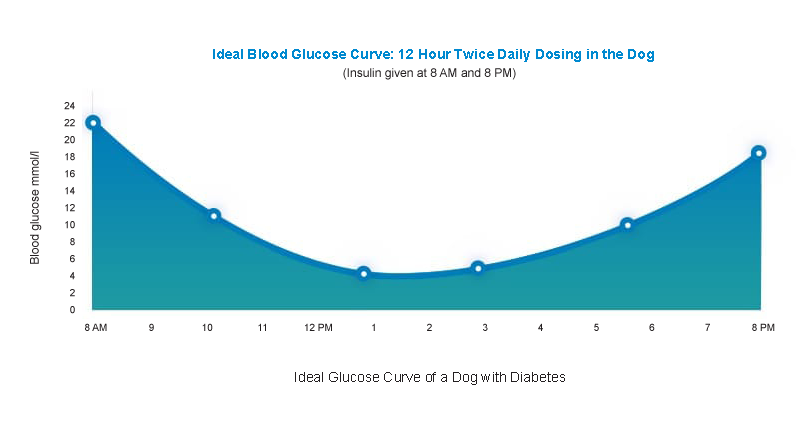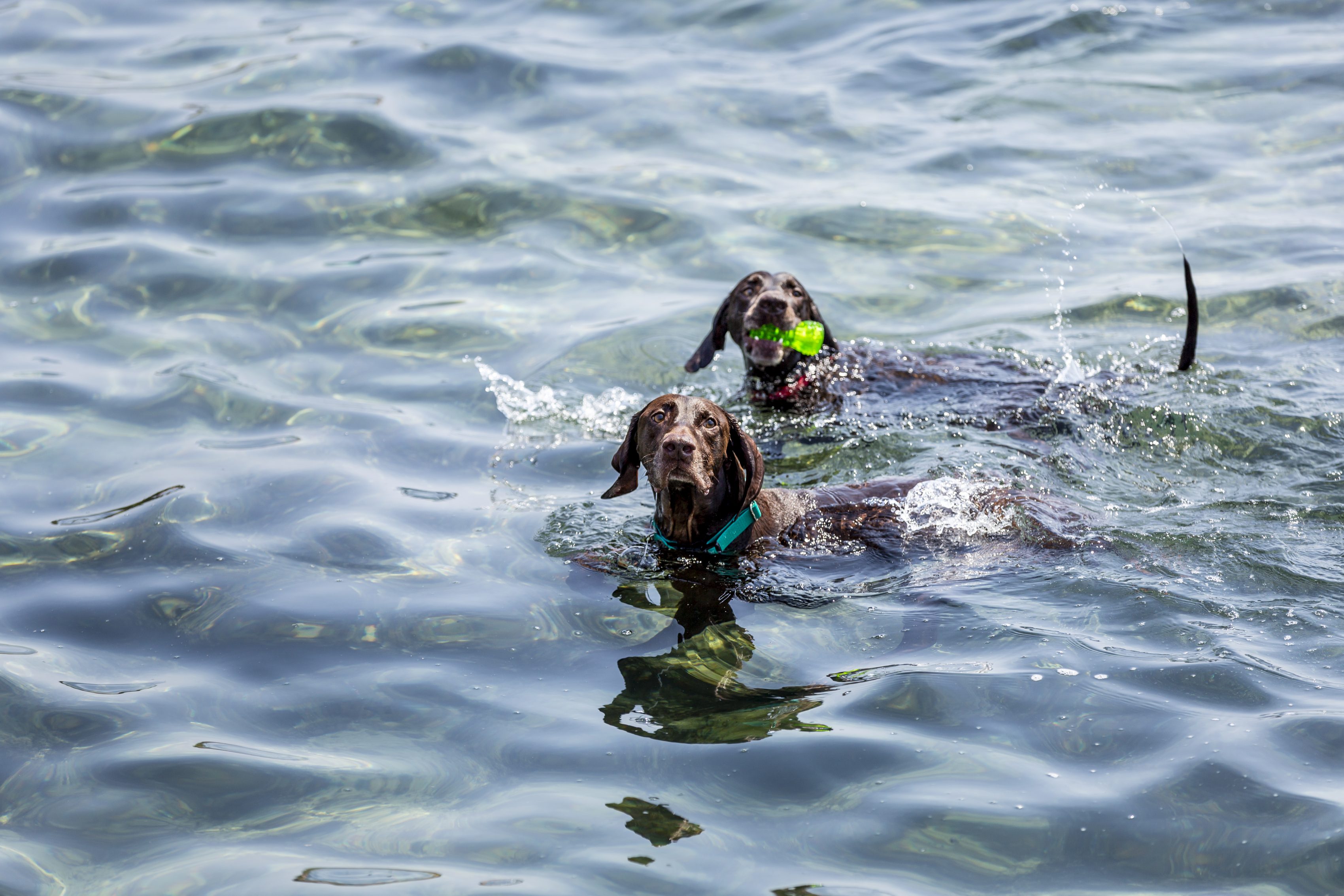Canine Blood Glucose Curves
A blood glucose curve can be a great tool to determine the effectiveness of the insulin and identify the appropriate dose and frequency of administration. In general, maintaining blood glucose levels in a dog with diabetes between 5–14 mmol/l for the majority of the day will minimise the symptoms of diabetes and complications.

Try our online glucose curve generator.
When creating a glucose curve, remember that stress can affect the reliability of results and the glucose curve is only one tool among others that can help manage dogs with diabetes.
How to complete a glucose curve
Feed and inject your dog with Caninsulin® as normal. Your vet may suggest you doing this at home, or they will do it at their practice. If your dog exercises at home during the day, the same exercise routine should be adhered to while your dog is in the clinic.
Blood sampling:
- Just prior to giving insulin and food
- At least 60 minute intervals
- Over a period of 12 to 24 hours
Measuring blood glucose
Blood samples can be taken to measure blood glucose. Two methods of taking blood samples to produce glucose curves include:
1. Collection by your vet of a venous blood sample from a peripheral vein. These plasma glucose concentrations are measured in a laboratory, or by an in clinic analyser.
2. Collection done, at home or in clinic, of a drop of capillary blood from the ear (pinna), or sometimes the inner lip or elbow callus, analysed with a handheld blood glucose meter (glucometer).
- Glucometers should be calibrated specifically for dogs and cats because of the difference in the ratios of glucose in plasma and red blood cells from humans.
- Readings may vary by as much as 15% from samples submitted to the laboratory.
- Handheld meters are reasonably accurate. If a reading seems unusual or does not match the clinical signs, a second reading should be taken or another method used to confirm the blood glucose measurement.
Continuous glucose monitoring
Continuous glucose monitoring (CGM) is an alternative approach which is increasingly commonly used to monitor control in diabetic pets. Instead of using blood samples, this type of monitoring utilises a tiny sensor that passes just below the skin, attached by way of an adhesive pad. With glucose measurements read by a mobile device such as a smartphone.
This technique often proves a convenient alternative way to get clearer insights into the quality of control of the diabetes over a number of days. Rather than measuring blood glucose it assesses glucose in interstitial fluid (which bathes the body’s cells).
Some fur-clipping is likely to be needed and some pets may attempt to remove the device, but overall it can often prove a less invasive and less stressful method of establishing longer term trending. In many circumstances, it can be more informative, practical and cost effective than repeated blood glucose curves.
How to interpret a glucose curve
Your vet can help explain the glucose curve, and how they interpret these readings based on your pet.
The glucose curve helps determine:
- Insulin effectiveness: Maximum and minimum blood glucose levels, which should ideally be between 5 and 14 mmol/l
Glucose nadir (lowest level) goal:
- 5-8mmol/l
Duration of insulin effectiveness:
- Duration of effectiveness used to determine frequency of insulin injections
Management goals
Management of canine diabetes can be considered successful when the clinical signs of diabetes mellitus improve without inducing hypoglycaemia (low blood glucose levels).
Routine rechecks
After your dog has been stabilised successfully, your vet may perform routine rechecks every 3–6 months.
Careful monitoring and control will help to limit the long-term complications associated with diabetes.
An example of a stable dog with diabetes is a blood glucose range of 5–14 mmol/l for most of a 24-hour period.
Ideal blood glucose curve
Below is an example of an ideal blood glucose curve for a dog on twice daily dosing where the range remains between 5–14 mmol/l for most of the 12-hour period. Please note that for a dog on once daily dosing the curve will appear very similar, but just within a 24-hour time period. Not all blood glucose curves will be ideal at first and some will always look a little different.
It is vital never to adjust your pet’s Caninsulin dose without consulting your vet as your pet could end up seriously ill. Your vet will consider the curve in combination with any other laboratory results, clinical signs and concurrent illnesses before making any decisions and will advise you of the best next steps.

Tracking Results

Recording your dog’s results is important to properly manage care.
Tracking Tools & Resources
1. Pet Diabetes Tracker app
Review and keep important information to manage diabetes.


2. Blood Glucose Curve Tool
Easily record blood glucose readings to generate a blood glucose curve.
3. Helpful Downloads
Additional resources to understand and manage canine diabetes.
Next Article: What is Canine Diabetes? >
Further Reading

Talk to Your Vet Today
to learn more about pet diabetes, and how cats and dogs can lead a happy,
healthy life with proper management
Caninsulin® 40 IU/ml Suspension for Injection contains porcine insulin. POM-V.
Further information is available from the SPC, Datasheet or package leaflet.
Advice should be sought from the medicine prescriber.
Prescription decisions are for the person issuing the prescription alone.
Use Medicines Responsibly.






